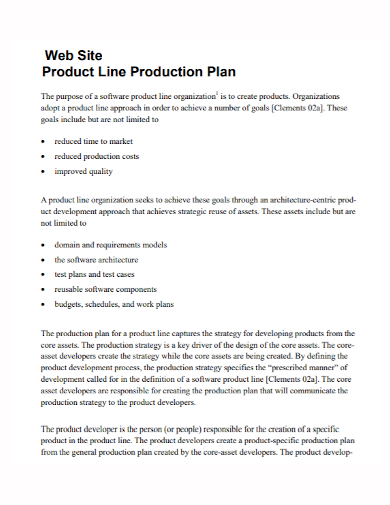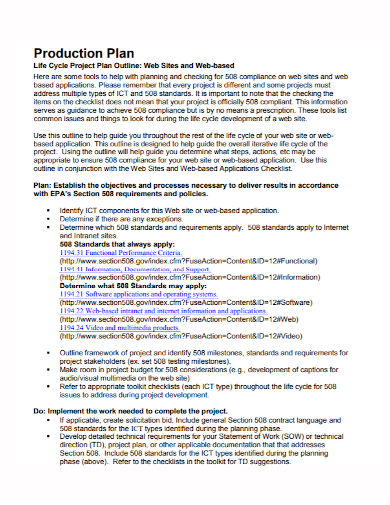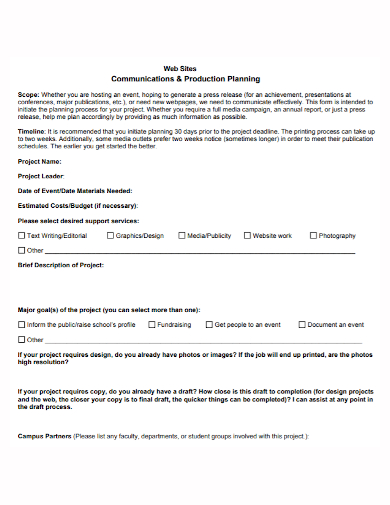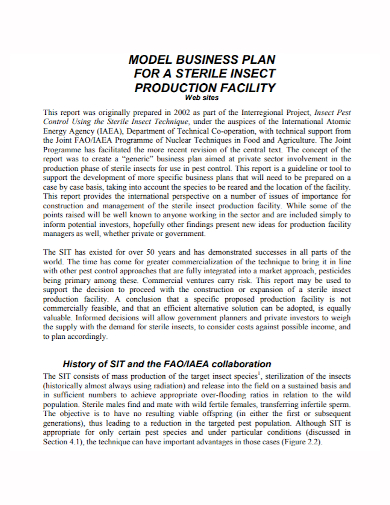Is your business lacking an online presence that will attract more customers and clients? Nowadays, with so many people spending their time online, it’s wise to take advantage of making a mark on the online world. One of the things that will increase the awareness of the established reputation of your brand, you need to have a website that will reflect your business by giving information about it and presenting the products and services that your business offers. But before you proceed to create your website, you need to create a plan along with a web developer to aid you in creating the best website suited for your business. This article will guide you on how to make a web production plan.
4+ Web Production Plan Samples
1. Web Production Plan Template
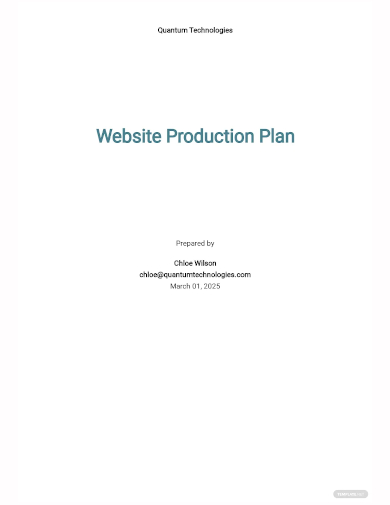
2. Web Product Line Production Plan
3. Web Project Production Plan
4. Web Communication Production Plan
5. Web Production Business Plan
What is a Web Production?
Website production is a project that entails the creation of a completely new company website. The project’s goal is to give you a website that is optimized for on-page SEO and can serve as an efficient marketing basis for your company.
How to Create a Website Development Plan
1. Make Your Website’s Objectives
E-commerce websites frequently serve multiple functions, ranging from customer service to online marketing. Identify your main purpose and determine which pages you’ll need, to ensure your website accomplishes that primary goal. From there, you can begin to organize your website structure more readily in the future.
2. Make Your Website SEO-Ready
Search engine optimization (SEO) is the practice of optimizing a website so that it may be found in search engines for specific search queries. Familiarizing yourself with fundamental principles like indexability, link structures, and keyword utilization will assist put your website in the greatest position to advance up search engine results pages.
3. Create a Sitemap
Sitemaps provide an overview and visual representation of each web page on a specific website. They make it simple for you to take a systematic approach to design your website while also serving as a means for search engines to better grasp the structure of your website. Creating a sitemap can assist you in guiding yourself through the planning phase, serving as a valuable and easy reference from which to build your website.
4. Customize Your Website Design
The visual presentation of your website can have a big impact on its success. Well-designed websites can produce a wow factor and promote interaction. The appropriate website design is likely to increase the likelihood of clients making a purchase. When considering your website design, remember that usability should be your guiding principle.
5. Plan Your Content
Developing a content strategy is an important step in determining your website’s long-term success. The type of audience you’re seeking to target will heavily influence the content you choose to focus on. To properly target your audience, you will most likely need to become acquainted with basic SEO techniques.
6. Know Your Competition
Examining your competitors‘ online presence can help you analyze what’s already on offer in your specific sector. Your website is the best place to highlight the distinctive uniqueness of your company. You may be able to provide a service that isn’t currently available elsewhere or stand out as a family business.
7. Use a CMS
Content management systems (CMS) are one of the most user-friendly solutions to manage your online content. They allow website developers to manage their web material in a non-technical and basic manner. Using a CMS can help you create a professional-looking website with little to no experience.
FAQs
Why planning is a must before developing a website?
Planning before you develop your website allows the web to know a client’s needs, obtain their brand information, determine the audience demographics and define the core purpose of the website to build a solid foundation on what the website should look and feel.
What are the six main steps in web design?
The six main steps in web design are:
- Discovery Phase
- Planning
- Design
- Development
- Launching of the website
- Maintenance
Once your website is ready to be launched, run several tests to ensure your website is ready to be published publicly and let the computer users see your website. Website testing can take on many different forms such as testing your webforms, checking for 404 error pages and meta information, reviewing your content, checking browser compatibility, running a speed test, and optimizing it for mobile use. Testing your website’s performance in each of these areas can make your website be its best possible version. To help you get started making the website production plan, download our free sample templates above to use as your guide!
Related Posts
FREE 9+ 30-Day Marketing Plan Samples in PDF | MS Word | Apple Pages | Google Docs
FREE 3+ Sales Team Action Plan Samples in PDF | MS Word | Apple Pages | Google Docs
Marketing Plan For Small Business Samples
FREE 7+ Fashion Business Plan Samples in PDF
FREE 10+ Sprint Planning Samples In MS Word | Google Docs | PDF
FREE 10+ Wedding Planning Samples in MS Word | Apple Pages | Powerpoint | PDF
FREE 9+ Monthly Study Planner Samples in PSD | Illustrator | InDesign | PDF
FREE 9+ Sample Curriculum Planning Templates in PDF | MS Word
FREE 10+ Teacher Development Plan Samples in MS Word | Google Docs | Apple Pages | PDF
FREE 10+ Basketball Practice Plan Samples in PDF
FREE 12+ School Business Plan Samples in PDF | MS Word | Apple Pages | Google Docs
FREE 7+ Client Strategic Plan Samples in PDF | MS Word
FREE 11+ Trucking Business Plan Templates in PDF | MS Word | Google Docs | Pages
FREE 7+ Small Hotel Business Plan Samples PDF | MS Word | Apple Pages | Google Docs
FREE 14+ Bakery Business Plans in MS Word | PDF | Google Docs | Pages

